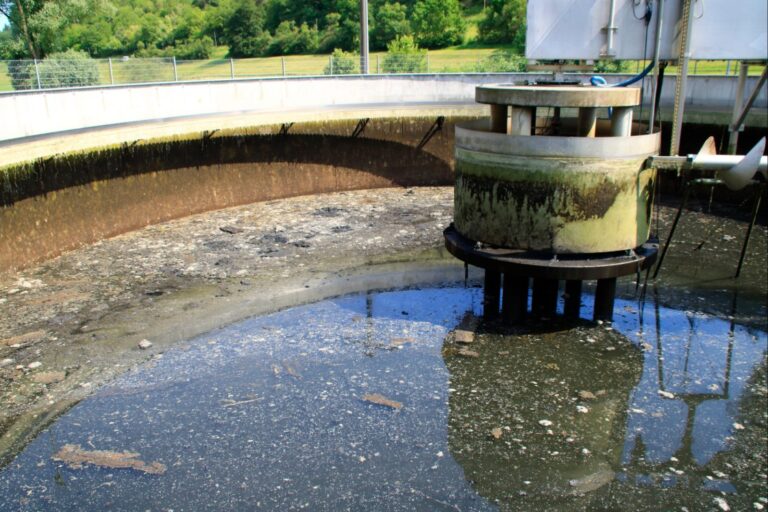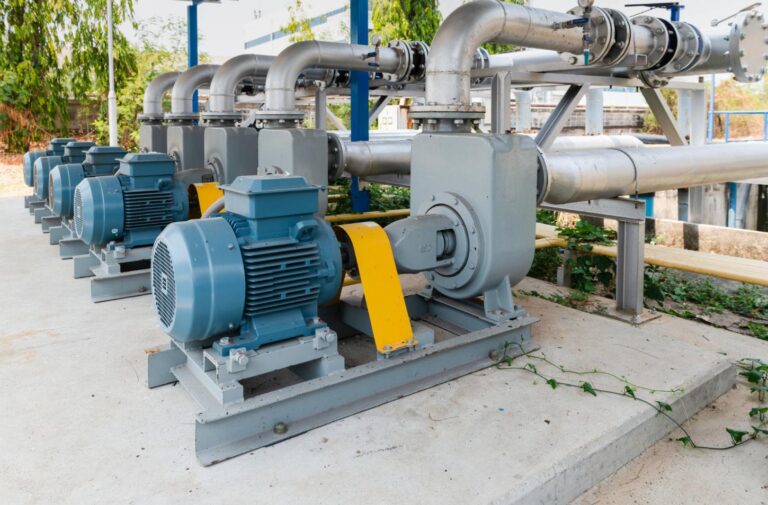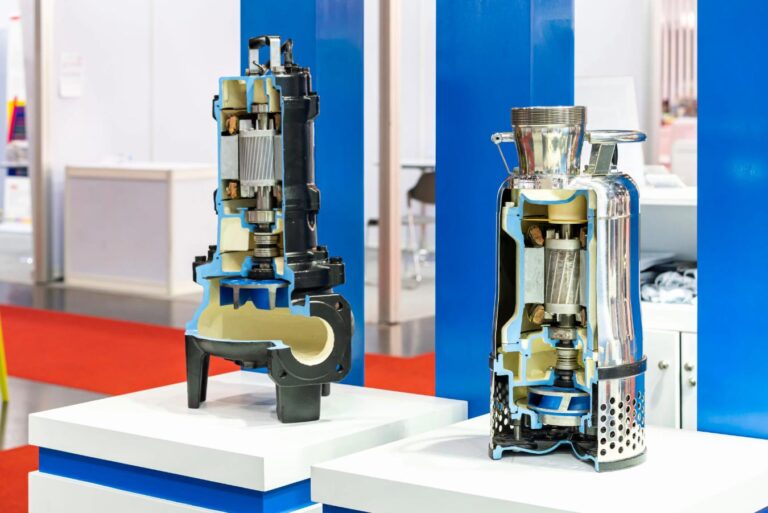Pumping high viscosity materials presents unique challenges that demand specialized equipment, careful system design, and consistent maintenance. From selecting the right high viscosity pump type to optimizing motor performance and piping layouts, every decision impacts efficiency, reliability, and operating costs. Understanding the hidden struggles of moving dense fluids—and how to overcome them—ensures smoother operations and longer pump life in demanding industrial environments.
The Hidden Struggles of Pumping High Viscosity Materials
When selecting a pump for high viscosity applications, it is critical to understand the operational challenges that arise from handling thicker fluids. Viscous materials behave differently from low-viscosity liquids, placing additional stress on pump components and reducing overall efficiency.
Resistance and Torque Challenges
A high viscosity pump must overcome increased internal resistance within the fluid. Thicker materials require more torque to move, which often translates into higher energy consumption and greater motor load. If the pump is not designed to handle this torque demand, it can lead to premature mechanical failure and reduced operational reliability.
Slower Flow Rates
High viscosity significantly impacts pump throughput. Even with the same pump speed, dense materials move more slowly through the system, reducing flow rates and process efficiency. Selecting the right high viscosity pump type is essential to ensure consistent delivery and avoid bottlenecks in production.
Wear and Tear on Components
Viscous materials create more friction within the pump, increasing wear on impellers, seals, and bearings. Over time, this can lead to costly downtime and increased maintenance costs. Pumps designed for high viscosity applications often feature reinforced components and abrasion-resistant materials to mitigate this effect.
Cavitation and Overheating
When a pump is not correctly matched to the viscosity of the fluid, issues such as cavitation and overheating become more likely. Cavitation can damage internal surfaces, while overheating can degrade seals and lubricants. The right pump for high viscosity applications will be engineered to minimize these risks through proper clearances, optimized flow paths, and adequate cooling measures.
Decoding High Viscosity Pump Types: Choosing Your Champion
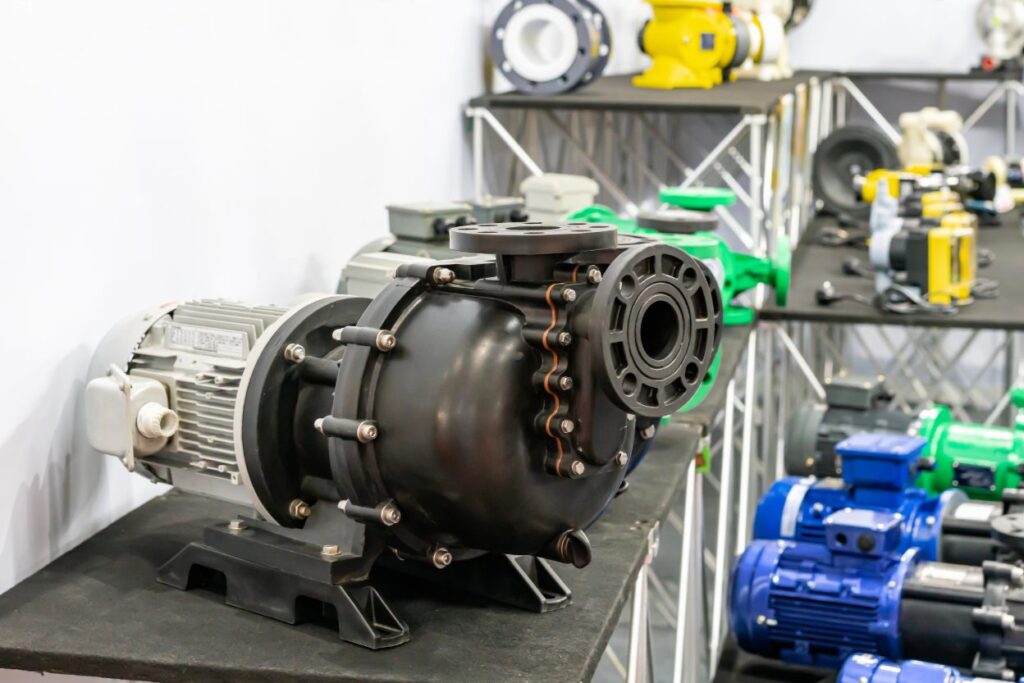
Selecting the right high viscosity pump is critical for efficiency, reliability, and cost control. Each pump type has unique design features that make it suitable for specific viscous fluid applications. Understanding these options will help you match the pump’s performance to your process requirements.
Positive Displacement Pumps – The Workhorse for Viscous Fluids
Positive displacement pumps excel in high viscosity applications because they move a fixed volume of fluid per cycle, regardless of thickness. This makes them ideal for maintaining consistent flow rates even when handling extremely dense materials.
Gear Pumps
Gear pumps use rotating gears to trap and move viscous fluids. They offer smooth, pulseless flow and are relatively compact. However, they can be prone to wear when handling abrasive viscous materials and may require precise tolerances for efficiency.
Lobe Pumps
Lobe pumps feature rotors that move fluid without direct contact, reducing wear and allowing for gentle handling of shear-sensitive viscous products. They are often used in the food, cosmetic, and pharmaceutical industries where hygiene and cleanability are essential.
Progressive Cavity Pumps
These pumps use a helical rotor inside a stator to move fluids in a continuous, non-pulsating stream. They are highly effective for very thick, non-flowing substances and can handle solids-laden viscous slurries without significant performance loss.
Screw Pumps – Quiet Power for Sticky Applications
Screw pumps use one or more intermeshing screws to move fluids efficiently with minimal turbulence. They are well-suited for sticky, high-viscosity materials and offer quiet operation with a steady flow rate.
Peristaltic Pumps – Handling Viscous Fluids with Precision
Peristaltic pumps move fluid through a flexible hose or tube using rollers. This design eliminates internal contamination and makes them ideal for viscous, shear-sensitive, or corrosive fluids in industries where sterility is key.
Piston Pumps – High Pressure, High Viscosity Performance
Piston pumps deliver precise volumes under high pressure, making them suitable for extremely viscous fluids that require forceful delivery. They are commonly used in industrial coating, sealant dispensing, and heavy-duty lubrication systems.
Which Type is Right for Your Fluid?
| Pump Type | Performance with High Viscosity | Cost Level | Reliability & Maintenance Needs |
| Gear Pump | Good for medium-high viscosity, smooth flow | Moderate | Moderate; wear with abrasives |
| Lobe Pump | Excellent for sanitary, shear-sensitive fluids | High | High reliability; easy cleaning |
| Progressive Cavity Pump | Excellent for very high viscosity and solids | High | High; requires regular stator checks |
| Screw Pump | Excellent for sticky, dense fluids; quiet | High | High; durable for long-term use |
| Peristaltic Pump | Good for viscous and sterile applications | Moderate | High; simple tube replacement |
| Piston Pump | Excellent for high-pressure viscous delivery | High | High, robust, but higher maintenance |
Unpacking the Selection Criteria: What Truly Matters for High Viscosity Fluids?
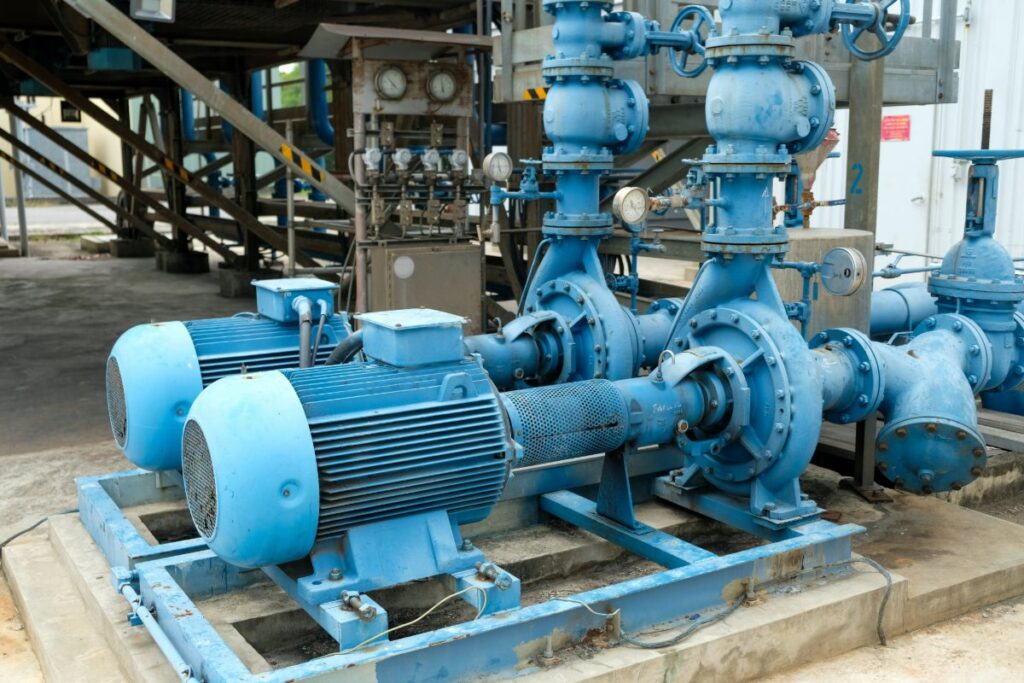
Selecting the right pump for high viscosity applications requires a careful evaluation of both the fluid’s characteristics and the operating environment. Beyond basic specifications, factors such as temperature, composition, and power requirements play a decisive role in pump performance and longevity.
Viscosity and Temperature
Viscosity can vary significantly with temperature, and this variation impacts how the fluid moves through the pump. For example, certain high viscosity pump types may perform well at elevated temperatures where the fluid thins, but struggle at lower temperatures when the fluid thickens. Pumps must be designed with proper clearances, heating jackets, or insulation to maintain optimal flow conditions.
Fluid Composition
The chemical and physical properties of the fluid determine whether a shear-sensitive design is required. Shear-sensitive materials, such as emulsions or polymers, can degrade if pumped with high-shear mechanisms like certain gear pumps. In such cases, lobe pumps, progressive cavity pumps, or peristaltic pumps may be better suited to preserve fluid integrity.
Flow Rate vs. Pressure
High viscosity fluids typically require more energy to achieve the same flow rate as low-viscosity liquids. Balancing desired throughput with achievable discharge pressure is crucial. Oversizing the pump can lead to unnecessary energy consumption, while undersizing can result in insufficient delivery and increased wear.
Material Compatibility and Durability
Abrasive fillers or corrosive chemicals in viscous fluids can quickly damage pump internals if incorrect materials are used. Stainless steel, hardened alloys, or specialized coatings can extend pump life, while elastomers must be selected for chemical compatibility to avoid premature seal failure.
Efficiency and Power Usage
Because viscous fluids increase resistance, power consumption is often higher in these applications. Selecting an energy-efficient high viscosity pump with optimized hydraulics, variable speed drives, and minimal internal slip can significantly reduce operating costs while improving process consistency.
Powering Your Workhorse: Motor and Drive Selection
The performance of a pump for high viscosity applications is only as strong as the motor and drive system behind it. Thick, resistant fluids place greater mechanical demands on the pump, making motor selection a critical factor in ensuring reliable operation and energy efficiency.
Torque, Torque, Torque
High-viscosity fluids require significantly more torque to move than low-viscosity liquids. A high viscosity pump must be paired with a heavy-duty motor capable of delivering sustained torque at lower speeds without overheating. Underpowered motors can stall, overheat, or suffer premature failure, leading to costly downtime and reduced productivity.
Direct Drive vs. Gear Reducers
Motor-to-pump connection impacts both performance and energy use. Direct drive setups transfer power without intermediate gearing, which is efficient but may lack the torque multiplication needed for extremely viscous fluids. Gear reducers, on the other hand, lower the pump’s operating speed while boosting torque, making them ideal for high-viscosity pumps that require slow, powerful rotations.
Variable Speed Control
Variable frequency drives (VFDs) allow precise control over pump speed, which is particularly important for high viscosity applications. By adjusting speed to match fluid characteristics and process demands, VFDs help prevent cavitation, reduce mechanical stress, and improve overall pumping efficiency. They also enable energy savings by eliminating the need for continuous full-speed operation.
Setting Up for Success: Installation Insights for High Viscosity Pumps
Even the most advanced high-viscosity pump will underperform if installed incorrectly. High viscosity materials need smooth, unrestricted flow paths and minimal resistance to ensure consistent operation and long equipment life. Proper installation reduces strain on the pump, improves efficiency, and minimizes downtime.
Right Pump Positioning
Placement is critical when handling thick fluids. Positioning the pump as close as possible to the fluid source reduces suction lift and minimizes friction losses in the inlet line. Gravity-fed inlets are highly recommended for high viscosity pump types, as they allow the fluid to enter the pump more easily without overloading the motor.
Inlet Size Matters
Viscous materials move slowly, so that undersized inlets can cause blockages, air entrainment, and uneven flow. A properly sized inlet—often larger than the pump’s discharge—ensures the pump receives a steady, unrestricted supply of fluid, preventing cavitation and performance drop-offs.
Piping Considerations
Piping for high viscosity applications should have minimal bends, smooth internal surfaces, and gradual transitions to reduce resistance. Oversized piping and short runs are preferable to minimize pressure losses. For certain high-viscosity pump setups, heat tracing or insulation may be necessary to maintain temperature and flow consistency throughout the system.
Keep It Running: Maintaining High Viscosity Pumps for Longevity
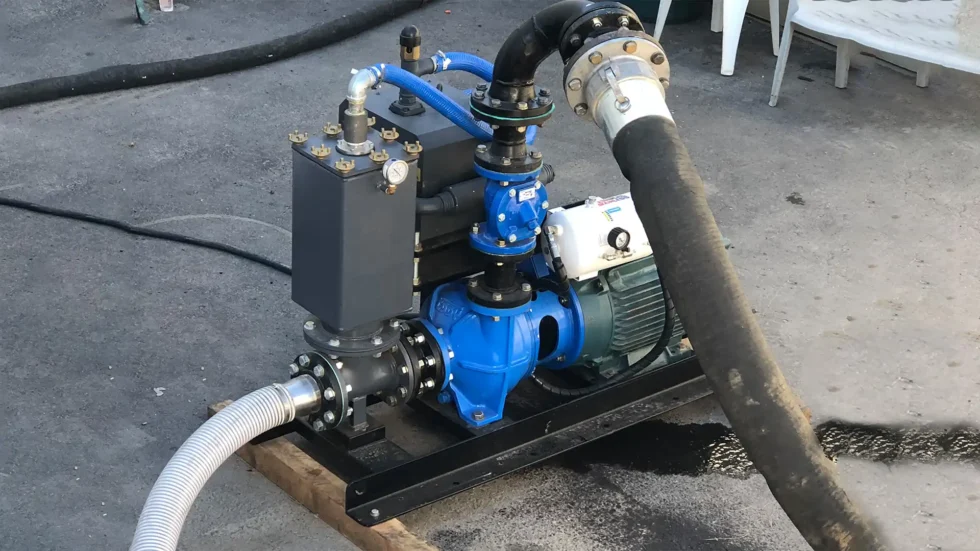
Proper maintenance is essential for ensuring reliable operation and extending the service life of any high viscosity pump. Viscous fluids place greater mechanical and thermal stress on pump components, making consistent upkeep critical to performance and cost control.
Routine Checks
Regular inspection schedules help identify potential issues before they cause unplanned downtime. Key tasks include:
- Monitoring flow rate and discharge pressure for signs of restriction or wear.
- Checking motor load and temperature to detect torque-related stress.
- Inspecting pump internals for material buildup, especially in high viscosity pump types handling sticky or abrasive fluids.
Seal and Lubrication Insights
High viscosity materials can accelerate seal wear and reduce lubrication effectiveness. Select seals compatible with the fluid’s chemical and temperature profile, and ensure lubrication points are serviced with grease or oil suited for high-load and low-speed conditions. For pumps with mechanical seals, maintaining proper flush systems helps prevent overheating and leakage.
Diagnosing and Fixing Common Problems
- Overheating: Often caused by excessive torque demand, poor lubrication, or blocked flow paths. Solutions include reducing speed, improving cooling, or clearing obstructions.
- Cavitation: Can occur if inlet restrictions or low fluid levels cause vapor bubbles to form. Address by enlarging the inlet size, reducing suction lift, or maintaining adequate fluid supply.
- Pressure Loss: Typically linked to internal wear, seal damage, or slipping in positive displacement pumps. Corrective measures may involve replacing worn parts or adjusting clearances.
Pumping Efficiency at Its Peak: Best Practices for High Viscosity Fluid Handling
Achieving maximum efficiency when using a pump for high viscosity applications requires a combination of smart system design, proper scaling, and ongoing performance monitoring. By applying best practices, operators can maintain high flow rates, minimize energy waste, and extend equipment life.
Optimizing Pump Performance
Fine-tuning a high viscosity pump system begins with matching the pump type to the fluid’s characteristics. Adjusting pump speed, maintaining correct clearances, and ensuring proper inlet conditions all contribute to improved efficiency. Using variable frequency drives (VFDs) allows for real-time speed adjustments, preventing energy loss while keeping flow rates steady. Additionally, reducing unnecessary restrictions in piping can significantly lower power demand.
Pumping at Scale
When scaling up for high-volume operations, it is critical to ensure that increased capacity does not compromise efficiency. Larger high viscosity pump types should be paired with motors and gear systems designed to handle higher torque loads without overheating. Parallel pump configurations can also be used to distribute workload, improve redundancy, and prevent overloading a single unit.
Long-Term Performance Tracking
Tracking performance metrics such as flow rate, discharge pressure, energy consumption, and motor load provides valuable insights into pump health. Deviations from baseline performance can signal the need for seal replacement, lubrication, or component adjustments. Implementing a proactive maintenance program based on this data helps ensure consistent operation and prevents costly breakdowns.
The Final Word on Selecting Your High Viscosity Pump
Handling viscous fluids efficiently requires the right combination of pump selection, installation precision, and ongoing performance monitoring. By applying best practices and choosing equipment built for the job, you can reduce downtime, improve throughput, and protect your investment. If you need expert guidance or turnkey solutions for your next pumping project, explore the specialized dredging and pumping services available at Washington Dredge Contractors to ensure your operations run at peak efficiency.




